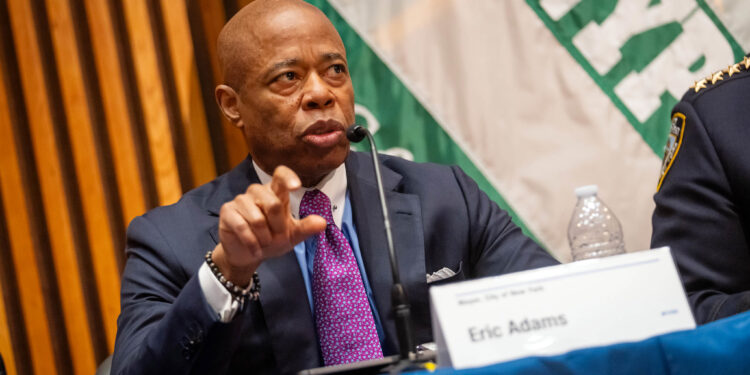New York City Mayor Eric Adams reiterated his call for stricter involuntary removal laws following a stabbing spree that left three people dead on Tuesday, November 19th. The attacks, allegedly committed by 51-year-old Ramon Rivera, a homeless man with severe mental illness, reignited debates over Adams’ controversial 2022 directive aimed at addressing untreated mental illness on the streets.
Adams defended his policy on CNN and at a media briefing, emphasizing the need for stronger state legislation to facilitate the involuntary hospitalization of individuals deemed a danger to themselves or others. “The street corner is not a psychiatric ward,” Adams stated. “This is the result of not taking action and ignoring people who need help.”
Rivera’s actions, which included fatal attacks in Chelsea, Kips Bay, and Midtown, underscored the urgency of Adams’ push. Advocates for Adams’ proposal argue that closing psychiatric facilities in past decades has left vulnerable individuals without adequate care, leading to cycles of homelessness, incarceration, and untreated illness. Adams’ directive has already led to over 50 individuals being moved into care, but the mayor insists more needs to be done.
The directive, part of Adams’ 11-point legislative agenda, trains police, clinicians, and outreach workers to compassionately remove individuals from public spaces for evaluations. Critics, however, question its reliance on law enforcement and the potential for trauma. Public Advocate Jumaane Williams called for a greater role for health professionals and peer support, while others argue the policy infringes on civil liberties.
State lawmakers are considering the H.E.L.P. Act to expand clinical authority for involuntary treatment, reflecting growing bipartisan support for reforming New York’s mental hygiene laws. Adams urged the legislature to act swiftly, citing the lives lost as a stark reminder of the stakes involved. “We have three New Yorkers murdered by someone betrayed by the health care system,” he said.
As Adams continues to advocate for systemic change, his policies face challenges from civil rights groups and mental health advocates. The debate underscores the complexity of addressing severe mental illness while balancing public safety, civil liberties, and humane care.









